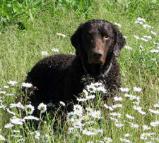
This is a placeholder text
Group text
by hodie on 13 May 2010 - 14:05
Source: The Globe and Mail [edited]
<http://www.theglobeandmail.com/news/national/toronto/york-spca-to-euthanize-all-animals-after-ringworm-outbreak/article1564000/>
About 350 animals will be euthanized at the York Region SPCA [Society for the Prevention of Cruelty to Animals] this week [week of 10 May 2010] after officials failed to contain an outbreak of ringworm that had been festering for the past few weeks.
That's the entire population of animals at the Toronto-area animal shelter, which has now been closed, said Kate
MacDonald, chief executive officer of the Ontario SPCA.
"Over the ensuing weeks, we've done what we can to contain the outbreak," she said. "It hasn't worked. We're in a scenario now where the outbreak itself is severe enough that 2 of our veterinarians have determined it will sadly be necessary to euthanize the animals in the shelter."
The animals will be euthanized in the coming days, she said, and the shelter has already been closed. It will likely reopen by next week [week of 17 May 2010] after the shelter is sterilized completely.
"Euthanasia is always a last resort," she said. "If there was anything else we could do, we were doing it."
Ringworm is contagious among humans and highly contagious among animals. Such outbreaks are very rare, Ms. MacDonald said.
-------------------
Below is excerpted from ProMed
[In dogs, approximately 70 percent of cases are caused by _Microsporum canis_, 20 percent by _M. gypseum_, and 10 percent by _Trichophyton mentagrophytes_; in cats, 98 percent are caused by _M. canis_. The Wood's lamp is useful in establishing a tentative diagnosis of dermatophytosis in dogs and cats but cannot be used to rule out this type of infection. Definitive diagnosis is established by DTM (dermatophyte test medium) culture. Detection of infection in asymptomatic carrier animals is facilitated by brushing the coat with a new toothbrush and then inoculating a culture plate by pressing the
bristles to the surface of the medium.
Lesions in dogs are classically alopecic, scaly patches with broken hairs. Dogs may also develop regional or generalized folliculitis and furunculosis with papules and pustules. A focal nodular form of dermatophytosis in dogs is the kerion reaction. Generalized ringworm in adult dogs is uncommon and is usually accompanied by immunodeficiency, especially endogenous or iatrogenic hyperadrenocorticism. Differential diagnoses in dogs for classic ringworm lesions include demodicosis, bacterial folliculitis, and seborrheic dermatitis.
While all of these treatments have varying degrees of effects, an old treatment not mentioned here is betadine (an iodine preparation) scrub.
by Red Sable on 13 May 2010 - 15:05
I am very familiar with ringworm in cattle and horses, and it is not a big deal at all. I have been in contact with it many times, and have never gotten it.
Is it so horrible in dogs/cats that they must be euthanized? Seriously? I find it hard to believe.
I guess that particular human society was going to hold a walk this weekend for a fund raiser, which has been cancelled because of the ringworm.. Demonstrators are up in arms about this and say they are still going to walk, only it will be funeral march.
by hodie on 13 May 2010 - 16:05
http://www.promedmail.org
Contact information Disclaimer Privacy Statement Copyright Information Terms of Service Cookie policy ↑ Back to top




